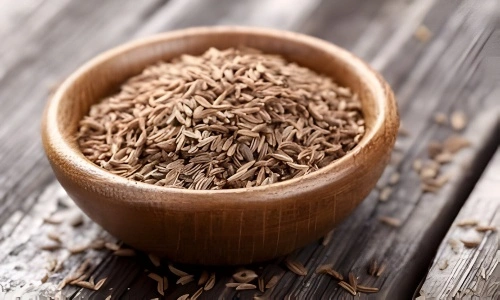From the chaotic stalls of Mumbai offering crispy pakoras to relish with tea to Los Angeles’ taqueria and the classic Athens gyro taverna, the authentic flavor of cumin as a spice has been lingering for thousands of years. Ancient Rome’s Pliny the Elder named it the best appetizer of all the condiments, and the pharaohs of Egypt were buried with it.
Defining Cumin Seeds
Originating as a seed of the plant “Cuminum cyminum,” the spice is known to be a member of the Apiaceae family alongside its relatives, caraway, fennel, and parsley (a few of them). Egypt’s Nile Valley first witnessed its presence in the eastern Mediterranean and southwest central Asia, recognizing its beauty later. It is predominantly grown in China, India, and Mexico, with Indian states like Gujarat and Rajasthan producing some of the world’s finest cumin seeds. Moreover, we, as Cumin Seeds Supplier, inform the country that produces and consumes the most spice globally, popularly called “jeera.”
The plants of this species demand a moist climate with sandy, warm, loamy soil and an extended growing season. Further, they bear tiny clusters of white or mauve flowers, from which seed pods originate sooner or later. Technically, a fruit, cumin, is set for harvesting when the plants wither and seed pods grow brown state.

Cumin: Pronunciation
Many doubts arise when having to pronounce cumin as spice. Cumin Seeds Manufacturers in India share how merchants experience simple questions like how to pronounce it even after having an array of culinary knowledge. Usually, we go with KYOO-MIN, but many others prefer KUH-MIN and KOO-MIN.
The Taste of Cumin
The first notes are zesty, sharp, and bitter, which resemble parsley or carrot skin, while the base ones are spicy, earthy, and nutty.
Cumin exporters in India suggest crushing a whole seed so it emits menthol-like flavors akin to fennel or caraway. In fact, caraway is often mistaken for cumin due to their similar appearance.
The incredible savoury base flavors of cumin pair exceptionally with condiments like allspice, cardamom, cinnamon, clove, coriander, cilantro, fennel, fenugreek, Greek oregano, mint and sumac, thyme leaves.
Cumin’s robust flavors are actually for bird seeds and are popular amongst chicken farmers who feed their flock cumin as a balanced diet. Europeans from the medieval era believed cumin could keep poultry from straying from home.
Cooking with Cumin
Besides being a crucial element in the preparation of Indian curries and chutneys, they also compliment breads, barbecue sauces, chili con carne, pickles, rice dishes, soups, and stews. Since its flavour can overtake any dish, be careful while adding it to delicacies.
Toasting the whole seeds of this kind brings out its essential oils, which can then be topped with salads or steamed rice. Frying the seeds in oil is usually the first step, followed by finely chopped tomato and diced onions.
The condiment goes with beans, beef, cabbage, chicken, dates, eggplant, lamb, lentils, onions, parsnip, peppers, potatoes, pomegranate, rice, tomatoes, and vinegar. Relish the same with carrot soup for a palliative experience.
Classic Delicacies Prepared Using Cumin
Nihari from India
Südtiroler Gulasch from Italy
Tacos Arabes from Mexico
Tanjia from Morocco
Pinchitos from Spain
Phanaeng curry from Thailand
Cumin seeds transcend their culinary role, embodying a rich history, versatile applications in traditional medicine, and a potent flavor profile that improves dishes across cultures, making them an indispensable ingredient beyond mere seasoning.
Besides manufacturing whole spices, Vora Spice Mills LLP stands out among cumin exporters in India by offering premium cumin seeds at competitive rates. Our focus is on providing expert guidance to customers, helping them get the most value for their investment. As your cumin seeds supplier, at Vora Spice Mills we prioritize meeting your needs and ensuring compliance with import-export regulations. Trust us to deliver quality products and unleash the true essence of cumin seeds, backed by our dedication as one of India’s top cumin seed manufacturers.
- How to Store Cumin?
To prolong the shelf life of cumin, store it in a sealed, airtight container, away from the sun’s rays and moisture. Whenever you take out cumin, use a dry spoon. Whole seeds have a longer shelf life than ground cumin—both need to be kept moist and temperature consistent and ideally stored in a cool, dry cupboard, not the fridge. At Vora Spices we take great care in the packing of our cumin to ensure the natural flavor and aroma is preserved.
- Are cumin and jeera the same?
Absolutely, cumin is the same as jeera! “Jeera” is the Hindi word for cumin. It is a small seed with a large flavor, and it is seen in all sorts of Indian dishes. People even drink jeera water for better digestion. At Vora Spices, we offer fresh, pure jeera so you can create tasty, healthy meals.
- Can cumin help regulate blood sugar levels?
Yes, cumin may help regulate blood sugar levels. Studies suggest that cumin seeds have properties that improve insulin sensitivity and lower blood glucose. Drinking cumin water or including it in daily meals can support blood sugar management. However, it should be used alongside a balanced diet and not as a replacement for medication. Always consult a doctor for medical advice.
- Is cumin heat or cold for body?
Cumin (jeera) is considered a somewhat heating spice in Ayurveda. It can enhance digestion by slightly increasing body heat, which is why it’s found commonly in warm foods and teas. Jeera water can still be considered cooling and soothing for the stomach when taken in moderation.
- How can I tell if cumin is fresh?
To determine whether cumin is fresh, rub a few seeds between your fingers; a fresh cumin seed has a strong earthy aroma. Fresh cumin will be dry and will not be oily or discolored. Ground cumin should be rich brown and bold smelling. If the smell is weak or faded, it has time to replace. At Vora Spices, we pack every batch fresh for flavor.


